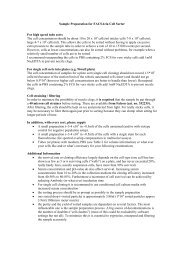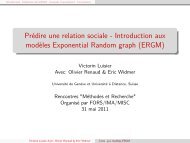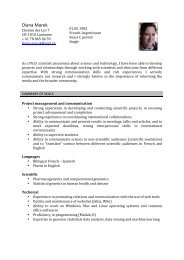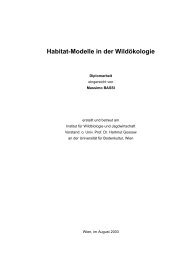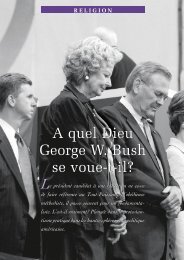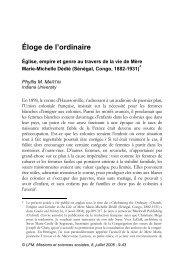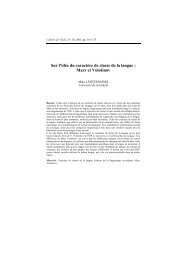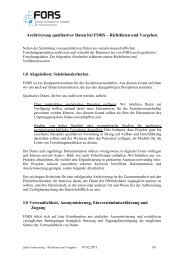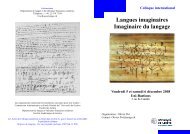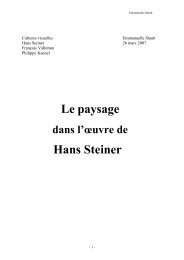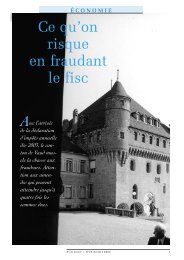conference programme book - European Survey Research ...
conference programme book - European Survey Research ...
conference programme book - European Survey Research ...
Create successful ePaper yourself
Turn your PDF publications into a flip-book with our unique Google optimized e-Paper software.
106 WEDNESDAY 20 JULY2.40.1 Dynamic modelling of Nonresponse in Business <strong>Survey</strong>sC. Seiler 11 Ifo Instute for Economic <strong>Research</strong>, GermanyIt is well-known that nonresponse affects the results of surveys and can even cause biases due to selecvies ifit cannot be regarded as missing at random. In contrast to household surveys, response behaviour in businesssurveys has been examined rarely in the literature. This paper is one of the first which analyses a large businesssurvey on micro data level for unit nonresponse. The data base is the Ifo Business Tendency <strong>Survey</strong>, which wasestablished in 1949 and has more than 5,000 responding firms each month. The panel structure allows to usestascal modelling including me-varying effects to check for the existence of a panel fague. The resultsshow that there are huge differences in business characterics such as size or subsector and that nonresponseis more frequent in economically good mes.2.40.2 Panel arion in the Cologne High School Panel (CHiSP: 1969/70, 1985, 1996/97, 2010)K. Birkelbach 2 , A. Grauenhorst 3 , C. Reinelt 1 , A. Weber 11 Universität Duisburg-Essen, Germany; 2 University of Cologne, <strong>Research</strong> Instute for Sociology, Germany;3 Universität zu Köln, GermanyWe will examine panel arion in a long term panel of former German high-school students. The primaryfield research was carried out in 1969/70 (n=3240, age 15); in three follow-ups (1985: n=1987, age 30; 1997:n=1596, age 43; 2010: n= 1297, age 56) the respondents’ private and occupaonal life courses have beensurveyed retrospecvely together with quesons concerning biographical, polical and religious atudes.2.40.3 Non-response and Arion - Evidence and Experience from the Brish Wealth and Assets <strong>Survey</strong>M. Aumeyr 1 , C. Blake 11 Office for Naonal Stascs, United KingdomThe Wealth and Assets <strong>Survey</strong> (WAS) is a new longitudinal household survey in Great Britain and the first andsingle source of informaon providing a detailed picture of household and individual wealth in Great Britainbased on assets and liabilies.Several methods are being used before, during and aer the field work aimingfor a high level of response rates over me. This paper discusses the advantages and disadvantages of thesemethods as well as the lessons learned from WAS. Despite the acons taken to keep response levels up, asubstanal amount of arion was experienced, which has lead to concerns about the quality of longitudinalesmates based on the remaining sample. The paper refers to a study aiming to invesgate the differencesbetween non-responding and responding households in the first follow-up wave...2.40.4 Panel Arion in a Study of the Unemployed in the Great RecessionC. Zukin 1 , C. Van Horn 1 , J. Godofsky 11 Rutgers University, United StatesIn August of 2009 the Heldrich Center for Workforce Development at Rutgers contracted with Knowledge Networksto use their on-line probability panel to conduct a naonal survey of 1200 unemployed U.S. adults whosaid they had been unemployed at some point in the preceding 12 months. Quesons centered on how longpeople had been out of work, their job searching strategies, their psychological state, their financial condionand coping mechanisms, among others.2.41 Measurement equivalence in cross-cultural survey research ITo be held on July 20, 2011 from: 16:00 to 17:30, in room 410.Coordinated by: Jouni Kuha - London School of Economics, United Kingdom



